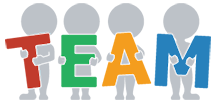Study Guide: Law, Public Safety, Security & Corrections Core Assessment
| Site: | ctYOU |
| Course: | Study Guide: Law, Public Safety, Security & Corrections Core Assessment |
| Book: | Study Guide: Law, Public Safety, Security & Corrections Core Assessment |
| Printed by: | Guest user |
| Date: | Wednesday, December 17, 2025, 7:32 PM |
Description
Study Guide: Law, Public Safety, Security & Corrections Core Assessment
Overview
 This study guide is designed to help students prepare for the Law, Public Safety, Security and Corrections Core Assessment. It not only includes information about the assessment, but also the skills standards upon which the assessment is based, resources that can be used to prepare for the assessment and test taking strategies.
This study guide is designed to help students prepare for the Law, Public Safety, Security and Corrections Core Assessment. It not only includes information about the assessment, but also the skills standards upon which the assessment is based, resources that can be used to prepare for the assessment and test taking strategies.
Each of the five sections in this guide provides useful information for students preparing for the Law, Public Safety, Security and Corrections Core Assessment.
CareerTech and Competency-Based Education: A Winning Combination
Law, Public Safety, Security and Corrections Core
- Assessment Information
- Standards and Test Content
- Sample Questions
- Textbook/Curriculum Crosswalk (coming Fall 2014)
- Additional Resources (coming Fall 2014)
Strategies for Test Taking Success
Notes
This assessment was developed in partnership with the National Partnership for Careers in Law, Public Safety, Security and Corrections, an organization dedicated to building partnerships to create, improve and sustain law enforcement, fire and emergency services, corrections, security and law career programs and systems. It measures a student’s ability to apply knowledge of the skills necessary for success in all careers in the law enforcement and criminal justice sector.
CareerTech and Competency-Based Education: A Winning Combination
Competency-based education uses learning outcomes that emphasize both the application and creation of knowledge and the mastery of skills critical for success. In a competency-based education system, students advance upon mastery of competencies, which are measurable, transferable outcomes that empower students.
Career and technology education uses industry professionals and certification standards to identify the knowledge and skills needed to master an occupation. This input provides the foundation for development of curriculum, assessments and other instructional materials needed to prepare students for wealth-generating occupations and produce comprehensively trained, highly skilled employees demanded by the work force.
Tools for Success
CareerTech education relies on three basic instructional components to deliver competency-based instruction: skills standards, curriculum materials, and competency assessments.
Skills standards provide the foundation for competency-based instruction and outline the knowledge and skills that must be mastered in order to perform related jobs within an industry. Skills standards are aligned with national skills standards and/or industry certification requirements; therefore, a student trained to the skills standards is equally employable in local, state and national job markets.
Curriculum materials and textbooks contain information and activities that teach students the knowledge and skills outlined in the skills standards. In addition to complementing classroom instruction, curriculum resources include supplemental activities that enhance learning by providing opportunities to apply knowledge and demonstrate skills.
Competency Assessments test the student over material outlined in the skills standards and taught using the curriculum materials and textbooks. When used with classroom performance evaluations, written competency assessments provide a means of measuring occupational readiness.
Each of these components satisfies a unique purpose in competency-based education and reinforces the knowledge and skills students need to gain employment and succeed on the job.
Measuring Success
Evaluation is an important component of competency-based education. Pre-training assessments measure the student's existing knowledge prior to receiving instruction and ensure the student's training builds upon this knowledge base. Formative assessments administered throughout the training process provide a means of continuously monitoring the student's progress towards mastery.
Written competency assessments provide a means of evaluating the student's mastery of knowledge and skills. Coaching reports communicate competency assessment scores to students and provide a breakdown of assessment results by standard area. The Coaching Report also shows how well the student has mastered skills needed to perform major job functions and identifies areas of job responsibility that may require additional instruction and/or training.
Assessment Information
 What is the Law, Public Safety, Corrections and Security Career Cluster Core Assessment?
What is the Law, Public Safety, Corrections and Security Career Cluster Core Assessment?
The Law, Public Safety, Security & Corrections Core assessment is an end-of-program assessment for students in law enforcement, criminal justice, security and or corrections programs. The assessment provides an indication of student mastery of basic knowledge and concepts necessary for success in careers in these areas.
How was the assessment developed?
The assessment was developed by the CareerTech Testing Center in partnership with the National Partnership for Careers in Law, Public Safety, Corrections & Security. Items were developed and reviewed by a committee of subject matter experts from several states, including Michigan, North Carolina, Alaska, Ohio, Oklahoma, and Texas. In addition, students from across the United States assisted with beta-testing the assessment.
What does the assessment cover?
The assessment is aligned to the Knowledge and Skills Statements for the Law, Public Safety, Security and Corrections cluster that were developed by the States’ Career Clusters Initiative. Specifically, the test includes 75 multiple-choice test items over the following areas:
- Academic Foundations 10%
- Communications 21%
- Problem Solving & Critical Thinking 8%
- Information Technology Applications 3%
- Systems 4%
- Safety, Health, & Environmental 13%
- Leadership & Teamwork 18%
- Ethics & Legal Responsibilities 11%
- Employability & Career Development 10%
- Technical Skills 3%
What are the benefits of using the assessment?
The assessment provides a measure of mastery of basic knowledge and skills needed by employees in law-related careers. Students who score 70% or higher on the assessment receive a Certificate of Mastery bearing the Partnership’s logo, which can be displayed in the student’s portfolio.
When should the assessment be taken?
The CareerTech Testing Center recommends that students take this assessment as soon as possible after receiving all standards-related instruction, rather than waiting until the end of the school year.
Is the assessment timed?
No. Although students may take as long as they need, most finish the assessment within one hour.
Can students use a calculator on the assessment?
No – calculators are not permitted. If needed, the test proctor will provide paper and a pencil to be used during the test. These items will be collected from the student when the assessment is submitted for scoring.
What accommodations can be made for students with Individualized Education Plans (IEPs)?
Accommodations are allowed for students with an Individualized Education Plan. Examples of allowable accommodations include:
- Extended time – This assessment is not timed, therefore students may take as much time is needed to finish. The assessment must be completed in one testing session.
- Readers – A reader may be used to read the assessment to a student who has been identified as needing this assessment.
- Enlarged text – Students needing this accommodation can activate this feature by clicking the "AA" icon in the upper right corner of the screen.
What can students expect on Test Day?
The assessment is web-based and delivered exclusively online by a proctor in the school’s assessment center. The proctor cannot be an instructor or anyone who was involved with the student during instruction. Once the exam window opens, the entire assessment is visible. Students can skip questions and return to them later. However, it is important to answer all questions before submitting the test for scoring – unanswered questions will be counted wrong.
After the assessment is scored, the student will receive a Coaching Report that not only shows the student’s score on the assessment, but also how the student performed in each standard area. Students who pass the assessment will also be awarded a Certificate recognizing their accomplishment.
Can students retake the test?
Students may retake the test unless their school or state testing policies prohibit retesting. Students who can retest must wait at least three days between test attempts.
Standards and Test Content
A. Academic Foundations (10 questions)
- Demonstrate knowledge of basic arithmetic operations such as addition, subtraction, multiplication and division.
- Apply data and measurements to solve a problem.
- Analyze diagrams, charts, graphs and tables to interpret results.
- Record time using a 24-hour clock.
- Understand basic terminology used by workers in law and public safety occupations.
 B. Communications (20 questions)
B. Communications (20 questions)
- Interpret verbal and nonverbal communication.
- Recognize barriers to communication.
- Report subjective and objective information.
- Recognize elements of communication using a sender-receiver model.
- Apply speaking and active listening skills.
- Recognize elements of written and electronic communication (spelling, grammar, formatting).
- Interpret verbal and nonverbal cues/behaviors.
- Communicate effectively with diverse individuals.
C. Problem-Solving & Critical Thinking (9 questions)
- Identify common tasks that require the use of problem-solving skills.
- Guide others through the process of recognizing concerns and making informed decisions.
- Analyze situations and behaviors that affect conflict management.
- Implement stress management techniques.
- Identify with others' feelings, needs and concerns.
- Resolve conflicts using conflict resolution skills.
D. Information Technology Applications (3 questions)
- Identify methods and types of data collected in law, public safety, security and corrections.
- Employ techniques to ensure documentation is timely, complete and accurate.
- Apply the fundamentals of privacy and confidentiality with regard to personal information.
- Identify legal and regulatory requirements related to the use of personal information.
- Identify and apply policies and procedures for access and disclosure of personal information.
- Describe the consequences in terms of disciplinary action of inappropriate use of personal information.
- Apply basic computer concepts and terminology in order to use computers and other mobile devices.
- Demonstrate basic computer operating procedures.
- Demonstrate the use of file organization and information storage.
- Use basic word processing, spreadsheet and database applications.
- Evaluate the validity of web-based resources
- Demonstrate appropriate email and social media usage.
E. Systems (4 questions)
- Describe the types and functions of organizations in law, public safety, security and corrections.
- Explain the functions and interactions between various local, county, state and federal organizations in law, public safety, security and corrections.
F. Safety, Health & Environmental (13 questions)
- Assess workplace conditions with regard to safety and health.
- Identify safety hazards common to workplaces.
- Apply principles of body mechanics.
- Comply with safety signs, symbols and labels.
- Understand implications of hazard materials.
- Understand principles of infection control.
- Apply personal safety procedures based on Occupational Safety and Health Administration
- (OSHA) and Centers for Disease Control (CDC) regulations.
- Use knowledge of First Aid procedures.
- Use knowledge of CPR procedures.
- Use safety equipment correctly.
- Apply principles of basic emergency response in natural disasters and other emergeny situations.
G. Leadership & Teamwork (18 questions)
- Understand roles and responsibilities of team members.
- Recognize characteristics of effective teams.
- Recognize methods for building positive team relationships.
- Analyze attributes and attitudes of an effective leader.
- Apply effective techniques for managing team conflict.
H. Ethics & Legal Responsibilities (11 questions)
- Analyze legal responsibilities.
- Explain laws governing harassment, labor and individual rights.
- Differentiate between legal and ethical issues impacting workers in law and public safety careers.
- Recognize ethical issues and their implications.
- Understand religious and cultural values and their impact on public service.
I. Employability & Career Development (10 questions)
- Classify personal traits and attitudes desirable for workers in law and public safety.
- Summarize professional standards as applied to hygiene, dress, language, confidentiality, and behavior.
- Apply employability skills in the workplace.
- Identify training, education and certification requirements for common occupations within the law, public safety, security and corrections cluster.
- Compare careers within the law, public safety, security and corrections pathways.
- Develop components of a personal portfolio.
- Understand the process for obtaining employment.
J. Technical Skills (2 questions)
- Maintain records to facilitate access to and exchange of information.
- Write realistic performance goals, objectives and action plans.
- Prioritize tasks to be complete.
- Develop timelines using time management knowledge and skills.
Test Taking Strategies
This section of the study guide contains valuable information for testing success and provides a common-sense approach for preparing for and performing well on any test
General Testing Advice
- Get a good night’s rest the night before the test – eight hours of sleep is recommended.
- Avoid junk food and “eat right” several days before the test.
- Do not drink a lot or eat a large meal prior to testing.
- Be confident in your knowledge and skills!
- Relax and try to ignore distractions during the test.
- Focus on the task at hand – taking the test and doing your best!
- Listen carefully to the instructions provided by the exam proctor. If the instructions are not clear, ask for clarification.
Testing Tips
-
Read the entire question before attempting to answer it.
- Try to answer the question before reading the choices. Then, read the choices to determine if one matches, or is similar, to your answer.
- Do not change your answer unless you misread the question or are certain that your first answer is incorrect.
- Answer questions you know first so you can spend additional time on the more difficult questions.
- Check to make sure you have answered every question before you submit the assessment for scoring – unanswered questions are marked incorrect.